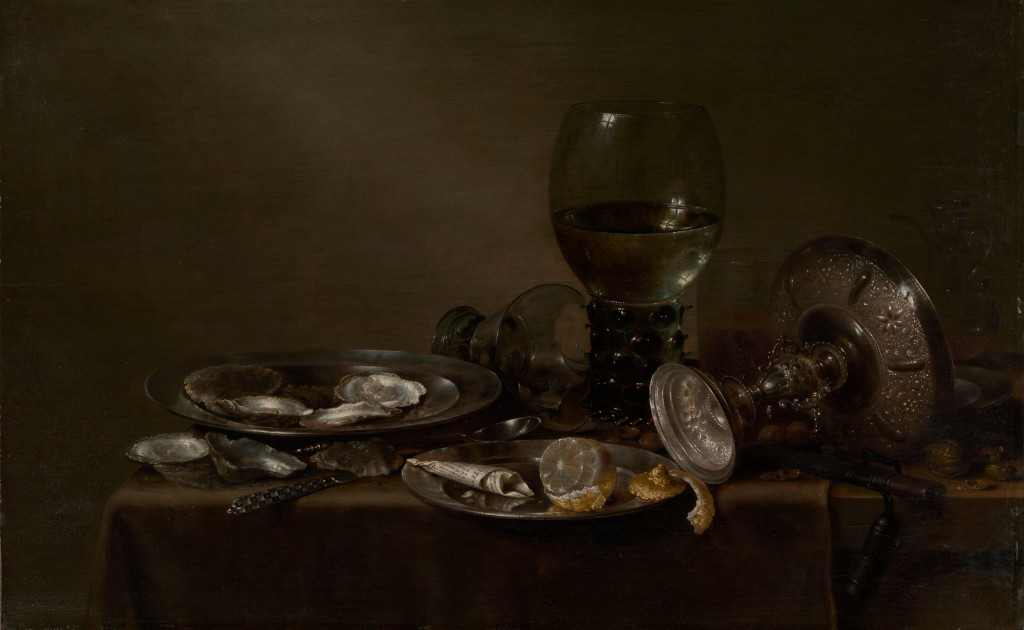School’s out for summer! Congratulations to all graduates and to those still in the midst of their studies, for completing another semester. It’s time for swimsuits and sunscreen.
For the second time, I taught “Food Narratives” to New School undergraduates and continuing ed students. In the past, I had conceived of food narratives in literary genres—poetry, non-fiction, journalism, and fiction. While such works remain prominent on the syllabus, I have broadened the scope to include food narratives in visual art and music. Finding the right approach was a challenge, but I arrived at a formula that the students seemed to embrace.
The art critic and award winning biographer Mark Stevens (de Kooning: An American Master, with Analyn Swan, Knopf, 2006) once told me that when you look at paintings of meals and food you can almost always be certain that the food will look great, delicious. This comment stayed with me and when I encountered a
a series of poems by Sandra Gilbert that appeared in The America Scholar I decided that it would be exciting to add a section on visual art to my syllabus. Gilbert’s poems are about paintings of meals by old masters, ranging from the gory (Goya’s Saturn Devouring One of His Children) to the sexy (Manet’s, Déjeuner sur l’herbe). Here is the opening of Gilbert’s poem about the Goya “First he swallowed the screams. / They were bitter, stringy, hard to chew, but he seasoned them /with the sweet dark curls & managed to get them down / without gagging . . .” The poem stands alone but to appreciate it fully, one must view the painting and be familiar with myth that inspired its brilliant creator. You can find Gilbert’s poems here.
My students embarked on a treasure hunt. I instructed them to visit a museum or gallery, view a painting of food or a meal, and invent a narrative to go with it. Although there is no shortage of material in New York City, I compiled a list of favorites that they could use as a starting point. As luck would have it, the Studio Museum in Harlem had just launched “Palatable: Food and Contemporary Art” an exhibit that considers how contemporary artists of African descent use food to explore politics, memory, heritage, race and culture. (The exhibit is on view through June 26).
It is sometimes said that the artist provides half the work; the reader or viewer supplies the rest. My students proved this assertion with their lively responses to paintings. They wrote poems, short stories, and essays, each quite different from the other even when contemplating the same masterpiece. One student viewed Willem Claesz Heda’s Still Life with Oysters, a Silver Tazza, and Glassware as depicting the prelude to lovemaking, interwoven with a disquisition about the aphrodisiacal power of the oyster; another imagined the violent demise of a relationship. Joachim Beuckelaer’s Fish Market, inspired in one student a light verse with rhymes worthy of Dr. Seuss, and in another a short story about a morning in the life of a Fishmonger’s wife.
Summer is time for the outdoors, but we will have rainy days along with days of intolerable heat. Find respite in a museum and let a painting transport you to another world, another life.
featured image via the Metropolitan Museum of Art.


Comments are closed.